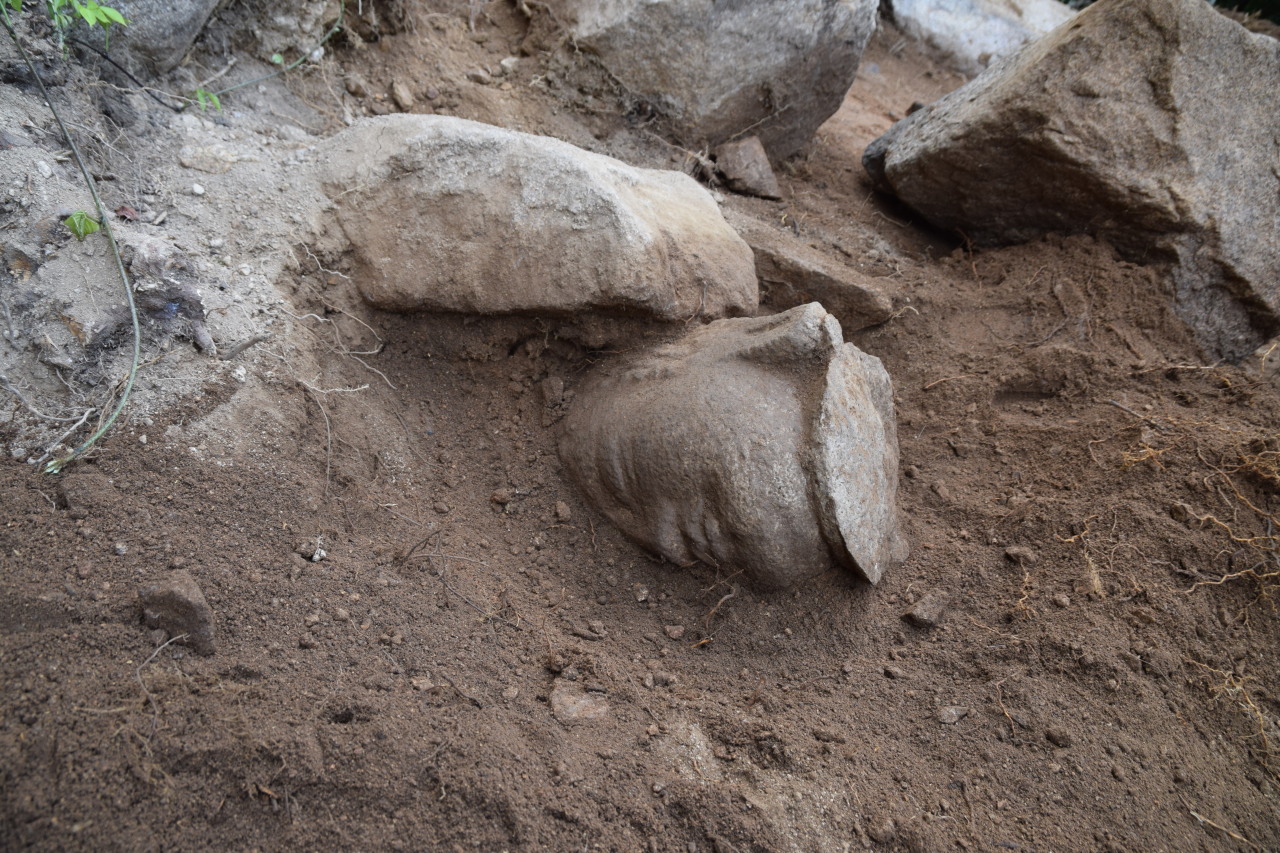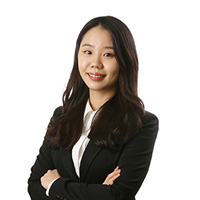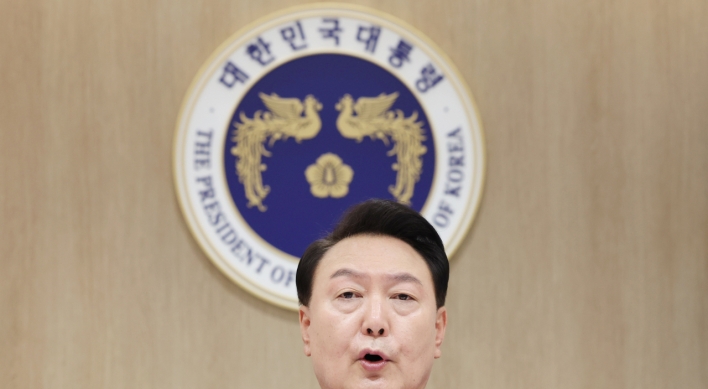Missing head of Buddha statue on Namsan in Gyeongju discovered
By Song Seung-hyunPublished : June 3, 2020 - 16:39

The Cultural Heritage Administration announced on Wednesday that it has discovered the head of a stone seated Buddha statue, which is estimated to date from the late Unified Silla period, in conjunction with the Silla Cultural Heritage Research Institute.
The head of the statue was found buried on Namsan in Gyeongju, North Gyeongsang Province.
“We began our research after the Gyeongju government asked us to find out the original location of the headless statue,” head of Silla Cultural Heritage Research Institute Park Bang-ryong said.
The heritage administration said it has failed to locate the original location of the statue’s body, but in the process of research, it found the head.
The statue is listed in a document about cultural heritages found on Namsan published by the Japanese Government-General of Korea during the Japanese colonial period (1910-45).
Similar to the seated Buddha statue in the Seokguram Grotto, also in Gyeongju, the headless statue’s left hand is upturned and rests at the navel while its right hand is placed on the right knee.
An unusual feature of the statue is its square stone pedestal -- seated Buddha statues from the Unified Silla period are usually placed on an octagonal stone pedestal.
From Aug. 26 to Sept. 28 last year, the Silla Cultural Heritage Research Institute searched the 800 square meter area on the mountain near where the body of the headless statue was found to locate the original site of the headless Buddha statue. In the process, its team spotted relics from Unified Silla to the Goryeo period and started more in-depth research. At the time, it adjusted the zone for the study and looked into a 545 square meter area on the mountain and discovered the missing head of the Buddha statue.
“With the discovery, the statue is now whole. With its head in place, this will become the second complete statue found on Namsan after the one in the Borisa Temple. Its value is at the level of state-designated treasures,” Park said.
The head of the statue was found in a well-preserved state.
“The Buddha statue is unique, appearing as if it has just been created. Not much has been worn out,” Park said. “Also from the right side of the cheek down to its chin, some golden paint remains. This feature is rare in Buddha statues from the Unified Silla period.”
According to CHA, it also found a round-shape crystal stone that was used to decorate the forehead between eyebrows buried near where the head was found.
The headless statue is 109 centimeters tall and its head is 50 centimeters tall and 35 centimeters wide.
“When we found the head, all the researchers said it was identical to the statue at Cheong Wa Dae’s Nokjiwon garden,” Park added.
The statue in Cheong Wa Dae is designated as treasure No. 1977 by the state. It was transferred from Yudeoksa Temple in Gyeongju to the present site during the building of the Japanese governor general’s residence in 1927.
The newly discovered head of the Buddha statue will be unveiled to the public from June 10 at the Silla Cultural Heritage Research Institute.
By Song Seung-hyun (ssh@heraldcorp.com)












![[KH Explains] How should Korea adjust its trade defenses against Chinese EVs?](http://res.heraldm.com/phpwas/restmb_idxmake.php?idx=644&simg=/content/image/2024/04/15/20240415050562_0.jpg&u=20240415144419)







